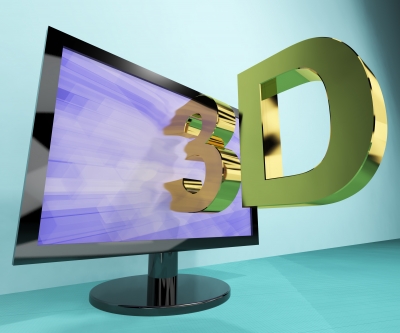3D's Cautionary Tale

The recent announcement by ESPN that they were shuttering their ESPN 3D channel should come as a surprise, but it really doesn't.
The 75 million homes that had the network available in their homes hardly knew what happened – or that anything happened at all.
So why did this promising new home technology falter?
Basically, its time was too soon. Or not soon enough.
High Definition cut in line ahead of it and stole the show. It's sort of a tough sell for an industry to get consumers excited about HD's "best picture they'll ever see", then shortly thereafter come out with a "game changer" of 3D TV.
On some level, consumers have to feel a bit gun-shy about buying into this one right away. Literally.
It's the glasses. Uncomfortable, expensive, and just way too…necessary. Negative buzz from early adopters about the glasses really helped to poison the well. People found out that the glasses made it impossible to watch in 3D and do anything else – second screen, tweet, snack, pet the dog, anything. Until they can ditch the glasses, consumers are unlikely to embrace 3D.
Despite this soon to be late 3D network, there's an ongoing perception that there's just not enough content to justify purchasing a new TV just to have the 3D capability. Movies, gaming and sports programming were natural fits, but otherwise, the content cupboard was rather bare. Chicken, meet egg.
But looking beyond 3D, there are advancements in television technology that are truly groundbreaking and worth the investment for both the industry and the consumer. Mobile DTV, for example. The ability to watch free, live TV wherever you are – even without cell phone service? That's called an upgrade. And as we've seen many times over in big, dramatic examples recently, it can actually be lifesaving.
So perhaps the 3rd dimension of television isn't in the enhanced display. It's in the disconnection, for lack of a better word. Television is unleashed. It's disconnected from the wall and it's available where you are, whenever you need it. Reach is extended throughout the day. Daytime is now mobile's primetime.
Broadcasters have recognized the need for TV Everywhere, and are investing resources into developing this extended platform. Advertisers have access to mobile advertising options that can optimize the effect of reaching people on the go. This emerging technology is available to 57% of the US population, and it's just getting started.
Ironically, this will require consumers to upgrade to some new technology – either a new device or at least an accessory.
But people tend to look at mobile devices as rather utilitarian and somewhat disposable – yet essential. These purchases are meant to be transitory. In the mobile world, a two-year commitment may be standard, but there's always going to be turnover in the marketplace. And for the consumer, there will always be that cool new "must-have" phone to replace what was cutting edge just two years ago – or much less.
In fact, with all that they're capable of now, how long will we continue to call these highly sophisticated, multifunction, multimedia devices "phones", anyway?
And there is no way that we're ever going to be without one again.
But what's going to be the next evolution for the homestead television?
Ultra High-Def is looming, so the next visual upgrade is on the horizon. So might be the next test of the threshold of consumer resistance.
But chances are, it will likely be Smart TVs – integrated with browsing capabilities, apps, etc. – that will have the potential to break through consumers' reticence in replacing the home HDTV with something measurably better.
The simple reason is that they will have a tangible impact upon the viewing experience.
It's possible that the new Smart TVs will feature an integrated Ultra High Definition screen – or even reimagined 3D, or some combination – to be a truly upgraded, immersive viewing experience.
Perhaps the greater lesson is to never underestimate the evolution of television, because it's something that can still surprise you.
Don Seaman joined the TVB in January 2012 as Manager of Marketing Communications, where he is responsible for promoting and raising awareness of the TVB, and of Local Broadcast Television’s value propositions within the traditional and digital media industries. Don can be reached at don@tvb.org.
Television’s value propositions within the traditional and digital media industries. Don can be reached at don@tvb.org.
Read all Don's MediaBizBloggers commentaries at Local Matters.
Check us out on Facebook at MediaBizBloggers.com
Follow our Twitter updates @MediaBizBlogger
The opinions and points of view expressed in this commentary are exclusively the views of the author and do not necessarily represent the views of MediaBizBloggers.com management or associated bloggers. MediaBizBloggers is an open thought leadership platform and readers may share their comments and opinions in response to all commentaries.
[Image courtesy of cooldesign/FreeDigitalPhotos.net]


